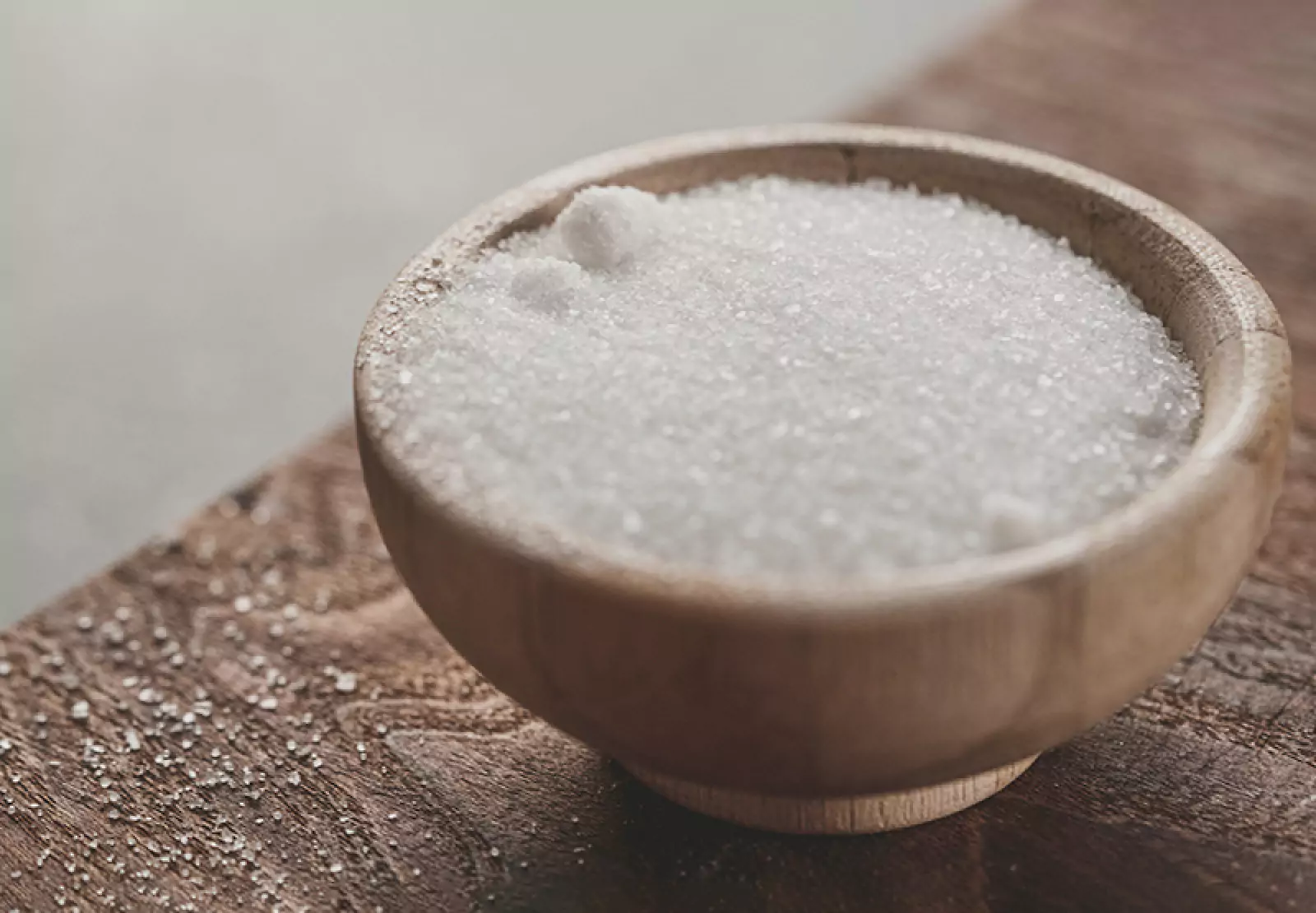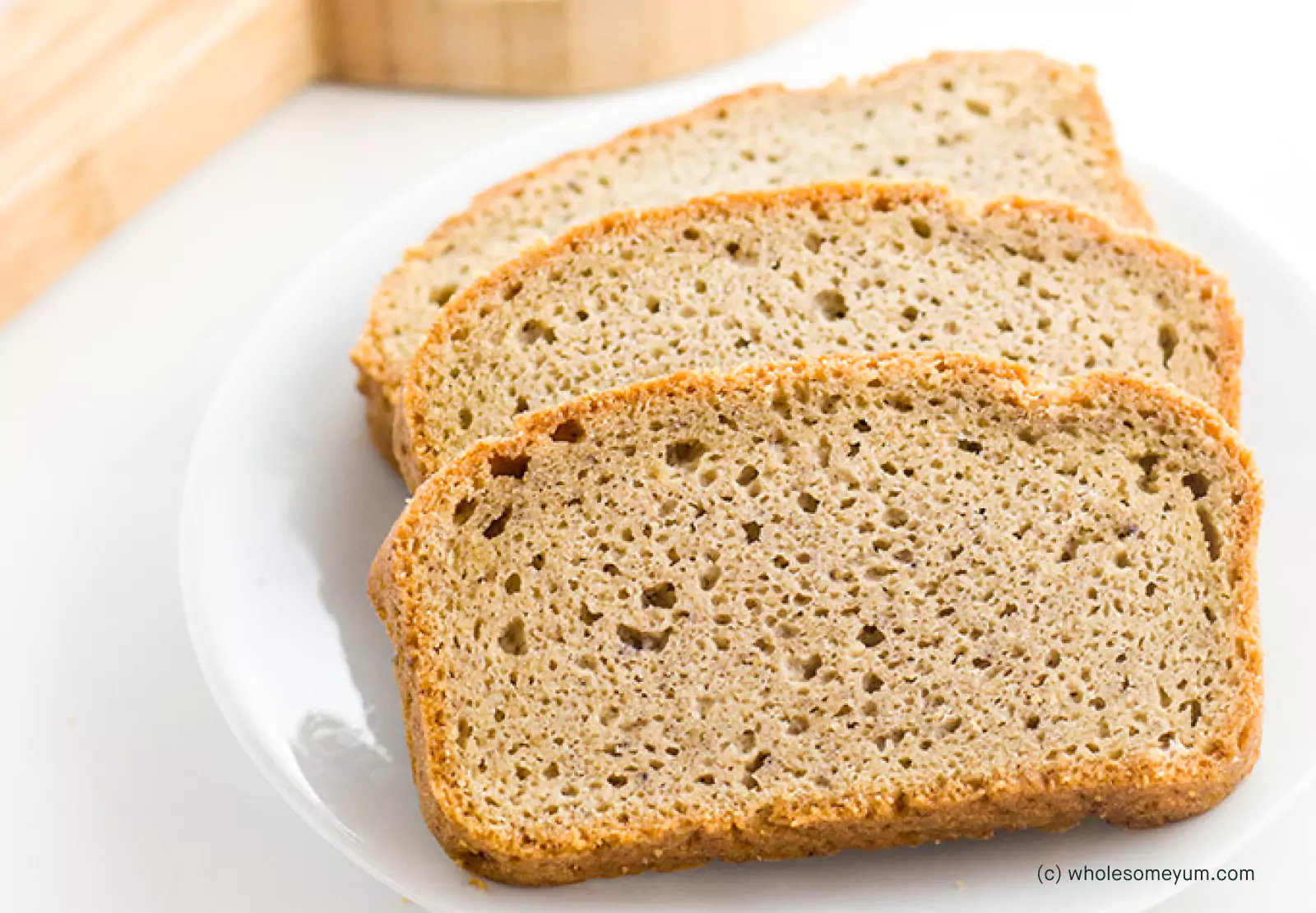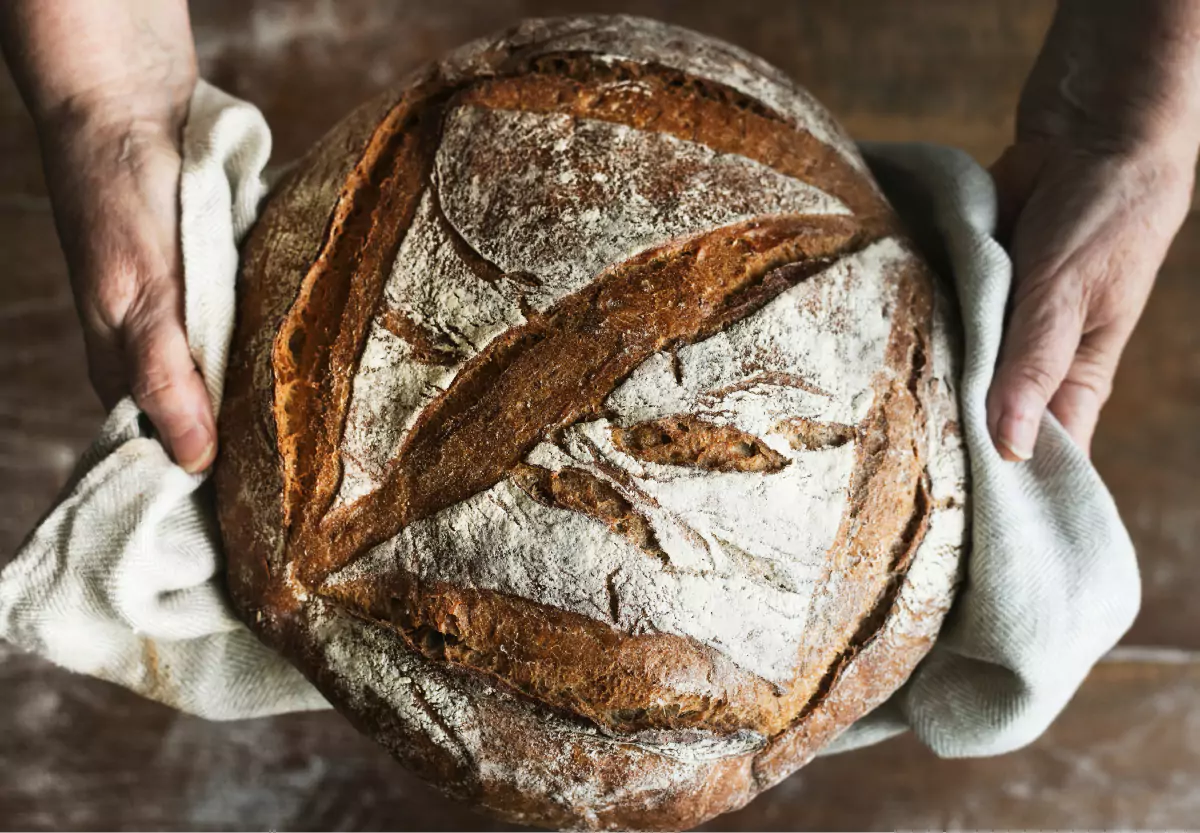Is Homemade Bread Healthier?

Key Takeways
Making bread at home became a major trend during the pandemic, as having extra time at home led many people to start getting creative in the kitchen. But even though homemade bread became trendy for a moment doesn’t mean it should be a passing fad.
While making homemade bread may be a bit more time consuming, it can be an enjoyable and therapeutic way to pass the time. And the best part is that once you’re done, you’ll end up with your own delicious and healthy loaf of bread!
Keep reading to learn all about the benefits of making your own bread, plus five low-carb bread recipes you can try out in the comfort of your own home.
Benefits of Making Homemade Bread

Many store-bought breads that you pick up at your local grocery store are known to have extra preservatives and additives that may leave you questioning the healthiness of bread altogether.
Let’s dig into the benefits of making your own bread and how it may actually be better for your health!
More Affordable
While buying bread can seem like a cheaper option, bread prices have actually been steadily increasing. The average loaf of white bread costs $1.69 in the US, which although may not seem like much, is a 12 percent increase from previous years.
According to Bloomberg, higher quality breads such as artisanal loaves and sourdough bread can cost up to $10 for a two pound loaf. With these statistics, it’s easier to see how making homemade bread with a few basic ingredients might be a more affordable option.
If you do the math, the price per serving of homemade bread can be much cheaper, especially if you want to make breads that are typically more expensive when bought in store (artisanal bread, gluten-free bread, keto bread, etc).
Easy to Customize
Another great benefit of homemade bread is that it’s very easy to customize flavors, styles, and textures. If you prefer a specific texture or taste, you can customize your loaf with a bread flour you like and your ingredients of choice.
For example, if you want a more savory or tangy bread that roasts well, you may opt for making sourdough bread at home. If you’re on a specific diet such as the keto diet, you might try swapping out white flour for almond flour to fit your macronutrient intake.
You can also throw in things like sunflower seeds, cranberries, black currants, or walnuts to bake your fresh bread to your liking.
Lower Sodium and Sugar Content

While sodium and sugar may not be inherently bad for you in appropriate quantities, consuming them in excess can have unwanted effects on your health. Some common store-bought items such as bread or canned foods can contribute to an excessive intake of these nutrients.
Swapping store-bought bread for a healthy homemade bread can be one way to reduce your sodium and sugar intake. It’s important to remember, however, that this may depend on the recipe you choose.
Fewer Additives and More Nutritious
Some brands of store-bought bread may contain preservatives, added sweeteners, and other additives that increase its shelf life, but unfortunately, these ingredients may have negative effects on your overall health.
These ingredients can include things like potassium bromate, hydrogenated oil, trans fats, high fructose corn syrup, and azodicarbonamide. Luckily, making your bread at home means that your bread will end up free of these types of additives.
Homemade bread can also have different nutritional values, as you can opt for a longer fermentation process when preparing the dough that may increase the levels of B vitamins and other nutrients.
Can Be A Mindful Process
The process of making bread at home requires you to stay present and engaged throughout. Prepping your ingredients and kneading your dough can be a mindful practice, and may even help support better mental health.
Whether you choose to bake bread in a bread maker, oven, or bread machine, making bread at home can feel fulfilling and therapeutic, especially as you focus on the movements throughout the process.
May Be Lower in Calories
Because homemade bread can include the ingredients of your choosing, you can opt for a lower calorie recipe which may be beneficial if you have specific wellness goals. A slice or two of homemade sourdough or whole wheat bread can be a healthy, lower calorie option.
However, this may depend on the type of bread you are making and the ingredients you use. For example, lower carb breads that are suitable for the keto diet may rely more heavily on nut-derived ingredients such as almond flour, which can be high in calories.
Is Bread Healthy?

We’ve already hinted at how homemade bread can be healthy due to having fewer additives. But what about regular bread? Lower quality options like white bread are typically full of refined grains that can have undesirable health effects.
For the purposes of this section, we’ll focus on high quality bread, which is usually made from whole grain flours like sourdough, rye, or spelt flour. These types of breads can be a source of nutrients such as fiber, B vitamins, magnesium, iron, potassium, phosphorus, zinc, and and protein to some extent.
According to the U.S. Dietary Guidelines, you should aim to consume about three to five servings of whole grains a day, and high quality bread can be one way to meet that intake recommendation.
For anyone who is gluten intolerant or following a keto diet, however, some breads may not be suitable for you. If that’s you, you can opt for a type of bread that contains ingredients you can consume. This is where homemade bread can be especially useful, as you can customize it to your diet and preferences.
Bread and Blood Sugar
It’s no surprise that most bread is high in carbohydrates, but the exact glycemic index, or GI, value depends on the type of bread and ingredients in the bread. For example, sourdough bread is generally classified as a medium GI food with a low glycemic load.
On the other hand, gluten-free breads can range from being low GI to high GI foods, depending on the exact ingredients. In general, homemade bread with whole grains may be better for blood sugar response, but the different varieties of bread may affect glycemic control in different ways:
- Sprouted grain bread may lead to a lower glucose response than sourdough, 11 grain, or white breads.
- Insulin area under the curve (AUC) may be lower for sourdough and white bread than 11-grain bread.
In addition to choosing a high quality bread, there are other ways to improve your blood sugar response when enjoying bread. You can try pairing your favorite bread with a source of additional fiber and protein, or opt for a lower carbohydrate option such as keto bread.
5 Homemade Bread Recipes Anyone Can Try
If you want to reap the health benefits of high-quality homemade bread and are curious about what it’s like to make it at home, here are five easy recipes you can try out.
1) Easy Low Carb Bread Recipe by Wholesome Yum

This low carb bread option is great for those who want to be more cautious about their blood sugar response or are on the keto diet. This makes for a great snack, so try pairing it with nut butter or add as a side to a healthy lunch bowl.
Ingredients
- 2 cups blanched almond flour
- 1/4 cup psyllium husk powder
- 1 tablespoons baking powder
- 1/2 teaspoon sea salt
- 4 large eggs (beaten)
- 1/4 cup coconut oil (measured solid, then melted)
- 1/2 cup warm water
2) The Ultimate Gluten-Free Bread Recipe (Artisan Style Loaf) by the Artisan Loop
As we mentioned, following a gluten-free diet doesn’t mean missing out on the deliciousness of artisanal bread. Try this gluten-free take on an artisanal style loaf, and enjoy it with some cheese or a few slices of turkey.
Ingredients
- 2 1/2 teaspoons active dried yeast
- 2 tablespoons superfine sugar
- 1- 1/2 cups + 2 tablespoon) warm water, divided
- 1/4 cup psyllium husk (rough husk form)
- 3/4 cup + 3 tablespoon buckwheat flour
- 1/2 cup + 3 tablespoon potato starch
- 1/2 cup + 2 tablespoon brown rice flour, very finely ground
- 2 teaspoons table or sea salt
- 2 teaspoons apple cider vinegar
3) Whole-Wheat Sourdough Bread by Eating Well

If you’re a fan of sourdough bread, you’ll want to try this whole wheat recipe. With a starter and instructions for the levain and dough, this recipe is as traditional as it gets for making homemade bread.
Top it off with some sliced avocado and tuna salad sandwich to boost your protein, healthy fat, and omega-3 intake while balancing your blood sugar response.
Ingredients
Levain
- ½ cup whole-wheat sourdough starter
- ½ cup water
- 1/3 cup + 1 tablespoon all-purpose flour
- 1/3 cup + 1 tablespoon whole-wheat flour
Dough
- 3-1/3 cups plus 1 tablespoon all-purpose flour, plus more for dusting
- 2 ¼ cups whole-wheat flour
- 2-3/4 cups plus 2 tablespoons warm water
- 1 tablespoon salt
4) The High Protein Bread by Diet Doctor
If you’re in a pinch or rather don’t like pairing your bread with an added protein source, then this high protein bread is for you. It adds protein content directly into the bread itself for a healthier blood sugar response and more satiating snack.
Ingredients
- 1 cup Greek yogurt (0% fat)
- 4 large eggs
- 1 cup whey protein isolate (unflavored)
- 1 cup almond flour
- 1 tablespoon ground psyllium husk powder
- 2 teaspoon baking powder
- ½ teaspoon salt
- ½ tablespoon sesame seeds (optional)
5) Paleo Bread (Low Carb, High Protein) by the Daring Gourmet

Here’s another low-carb bread option that not only is keto-friendly, but is also high in protein. This recipe can be further customized for those who are vegan or on the paleo diet.
This recipe packs a punch nutritionally and is great for those who have multiple dietary restrictions.
Ingredients
- 1/4 cup whole almonds
- 1/4 cup whole hazelnuts
- 1/2 cup pumpkin seeds
- 1/4 cup flax seeds
- 3 tablespoons hulled sesame seeds
- 1 1/2 cups almond flour
- 1/2 cup hazelnut flour
- 2 tablespoons coconut flour
- 1 1/2 teaspoons baking soda
- 1/2 teaspoon salt
- 3/4 cup nut milk of choice
- 1 tablespoon apple cider vinegar
- 3 eggs (vegans: substitute 3 flax eggs)
- 1/3 cup coconut oil, melted and slightly cooled
- 1 tablespoon raw honey (vegans: maple syrup)
Find the right Nutrisense programto turn insight into progress.
Go Beyond Glucose Data with Nutrisense
Your glucose can significantly impact how your body feels and functions. That’s why stable levels are an important factor in supporting overall wellbeing. But viewing glucose isn't enough. Nutrisense, you’ll be able to learn how to use your body's data to make informed lifestyle choices that support healthy living.
One-to-one coaching
Sign up to access insurance-covered video calls to work with a glucose expert: a personal registered dietitian or certified nutritionist who will help tailor your lifestyle and diet to your goals.
Monitor and measure what matters
With the Nutrisense CGM Program, you can monitor your glucose with health tech like glucose biosensors and continuous glucose monitor (CGM)s, and analyze the trends over time with the Nutrisense App. This will help you make the most informed choices about the foods you consume and their impact on your health.
Find your best fit
Ready to take the first step? Start with our quiz to find the right Nutrisense program to help you take control.

Heather is a Registered and Licensed Dietitian Nutritionist (RDN, LDN), subject matter expert, and technical writer, with a master's degree in nutrition science from Bastyr University. She has a specialty in neuroendocrinology and has been working in the field of nutrition—including nutrition research, education, medical writing, and clinical integrative and functional nutrition—for over 15 years.




